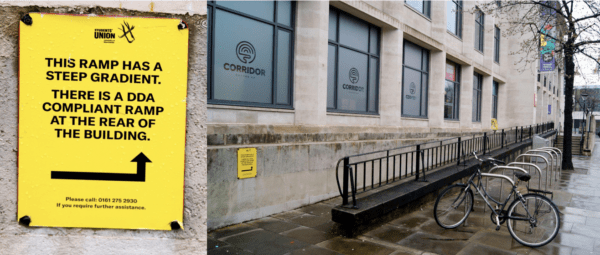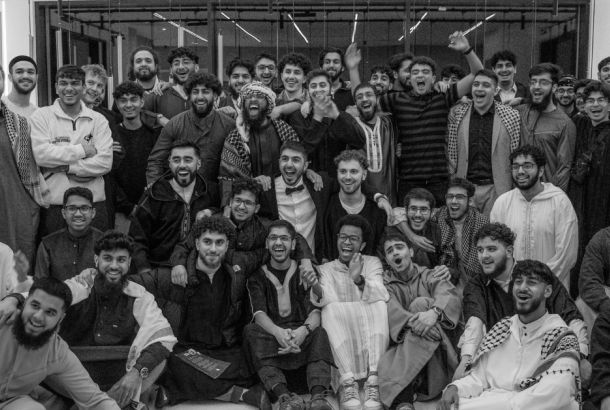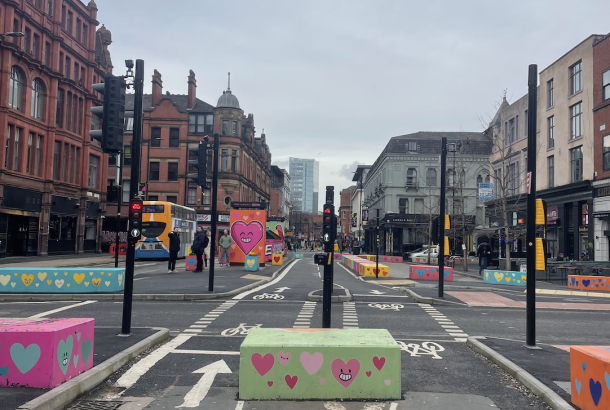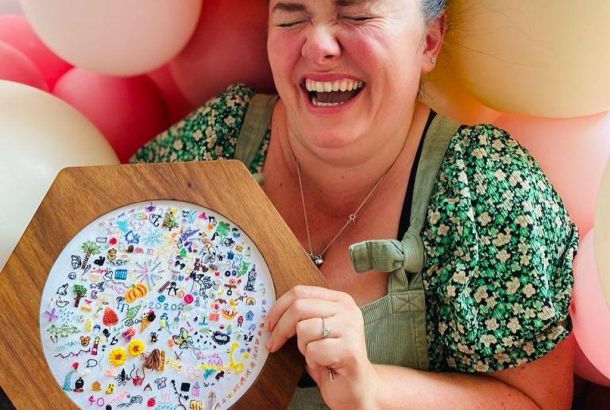Who are our cities built for? (And why is it only men?)
By Erin Osman

It is difficult to imagine our cities, streets, houses, and parks being very different from the way that they exist today. Houses generally follow the same basic structure: consisting of kitchens, bathrooms, bedrooms, and living rooms (if you’re lucky). Cities and towns provide us with shops, shopping centres, cafes, restaurants, and cinemas.
Thanks to an increasingly globalised society, wherever you are in the world, the structuring of major cities stays more or less the same – with a McDonald’s basically guaranteed around every street corner.
This is to say, we very rarely give much thought to the structuring, or the planning, of our cities. We usually take it for granted that the way that they exist now is the way that they have always existed. And we give little thought to who, how, or what has made them that way in the first place.
And yet, city design is intrinsically important to the ways in which we operate our day-to-day lives. From our travel to our work, our domestic lives, and our recreational time: city design affects everyone.
In the 1940s, Swiss architect Le Corbusier introduced the Modular system into contemporary architecture. Without delving too deeply into the intricacies of architectural study (both because this might mean people stop reading now, and because my brain won’t allow for it), the Modular system is a proportional system which came to affect measurements for urban design. Essentially, it enabled architects to relate their designs to actual human-size proportions.
Sounds great, doesn’t it? What a good idea! Oh, it is! Just so long as you are a man. And you also just so happen to be around 6 feet tall.
See, when Le Corbusier came up with his Modular system, its measurements curiously considered the standard human height to be something like 1.75 metres (around 5’9″). A figure which, more or less, excluded feminine measurements. In the post-war architectural world, everything from the height of a door handle to the length of a stair tread became governed by this system of measurement.
Not only did this proportional system exclude the proportions of most women, it also glossed over the existence of children, the elderly, disabled people, and in fact anyone who happened to exist outside of this standardised ideal.
Needless to say, architectural study has moved far beyond Le Corbusier’s Modular man. Yet, despite this progression, a kind of culture of exclusion within the industry seems to persist. Still, architecture and construction is a very male-dominated industry, where most of the biggest decisions about urban landscapes are made by men for men.
This is not to say that men should have to apologise for being architects (good for them), but it does make us wonder about the severe lack of representation in the field. While the number of (straight, white) male architects is not the problem in and of itself, it does mean that certain people (disabled, women, elderly, economically disadvantaged) are very often left on the sidelines of decision-making processes.
Not only do these imbalances happen at an individual level (lack of representation in workplaces and in higher education), but, they also occur macrocosmically (in the production of urban landscapes). These imbalances are evidenced in our actual urban environments: in the lack of adequate street lighting, inaccessible buildings, narrow pavements, and badly planned public transport.
The result of such under-representation within architecture might also help to explain the existence of so-called ‘hostile‘ architecture, such as anti-homeless benches, where armrests are positioned in a way which makes the bench impossible to sleep on.
I sat down to speak with Jess Watson, third-year Architecture student and co-chair of Manchester’s Feminist Collective, to pick their brain to find out more about feminist urbanism. “Architecture surrounds us all the time,” they tell me, “everyone uses it, no one is unaffected by it.”
Their enthusiasm for the issue is immediately clear – in fact, Jess confesses that it consumes most of their waking thoughts.
I asked Jess about some of the everyday ways that urban planning excludes people. They sigh, and begin to talk first about public transport.
“All the transport links meet in the one centre. So, it’s journeys in and out of the city.” The reason for this, they tell me, is because historically, “men who lived out in the suburbs would come into their office in the city, and then go home again. They didn’t do multi-trip journeys, they didn’t have to drop the kids to school on the way, or pick up shopping on the way home.”
In the UK, on average, women are more likely to use public transport. Jess concurs, “it is women who are more likely to not drive cars,” and therefore “it is women who are more likely to need to use public transport.”
“Even if you look at the trams and buses in Manchester, the routes all take you to Piccadilly Gardens, and then back out again.”
It’s normal for women to be scared when walking home at night. “People who are men or who pass as cis-men don’t notice it, because they’ve never had to worry about it,” says Jess. It certainly seems that men possess a kind of luxury in having never had to notice.
A big part of Jess’ research interests centres around the accessibility (or rather, the in-accessibility) of buildings. “Accessibility is always added on as an afterthought,” they tell me.
“The entrance to get in for disabled people is round the back.” While a building can claim to be fully accessible, the journey of accessibility differs from the journey an able-bodied person would take through the building. Jess believes accessibility “should be planned from the beginning so that everyone can move through the same journey.”

This image shows how the ramp at the front of the Stevo Biko building is too steep to be compliant with the Disability Discrimination Act (DDA). The DDA-compliant ramp can be found around the back of the building
“Everyone needs to be a part of the conversation, at the very beginning of urban planning. It is really a very simple solution,” Jess tells me. “It can’t just be this elite group of people that are designing buildings for people that are nothing like them.”
Jess has encountered this very limited perspective in their classes: “There’s a few of us […] more local people, working class people, you know, disabled people, women […] constantly fighting to sort of prove […] that this is a valid thought. A valid critique. And that just because you’ve never heard it and just because it’s not your lived experience doesn’t mean it’s never been a problem. It just means you’ve never acknowledged it.”
This kind of work is being done by various other groups and is growing exponentially. Jess told me about one particular atelier collective, PRAXXIS, based in Manchester. PRAXXIS is led by Manchester lecturer Helen Iball, and works to explore and ask questions as to what feminist architecture might be now and in the future. Intersectional feminism is at the core of the groups’ concerns, allowing them to see how certain inequalities within society affect built environments.
Cities are beginning to put women and non-binary people at the heart of planning processes. In October 2022, Glasgow became the first UK city advocating feminist urbanism – introducing changes to the city’s infrastructure including more accessible public toilets, more street lighting (particularly in public parks), safer public transport services, and wider pavements.
Writer Ivan Jablonka, in his seminal book, A History of Masculinity, describes how around the world, governments are building so-called ‘safe zones,’ especially on public transport. ‘Rio de Janeiro, Mexico City, Tokyo and Osaka subways have women-only carriages for certain hours of the day and night.’ Indeed, movements like Manchester’s annual Reclaim the Night march also aim to tackle ‘sexism’s limitations of time and space for women.’
Architecture is everywhere. Chances are, you are sitting in it right now. It is the make-up of our lives, and it affects everyone. It seems like architecture is about so much more than just buildings, concrete, and mathematics. First and foremost, being a good architect means being a good listener.
And, if our current urban environments are failing to meet the needs of everyone, isn’t it time for us to start listening?







